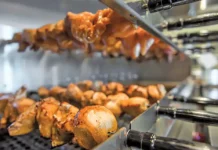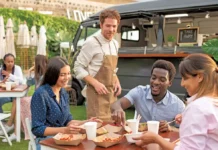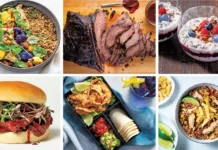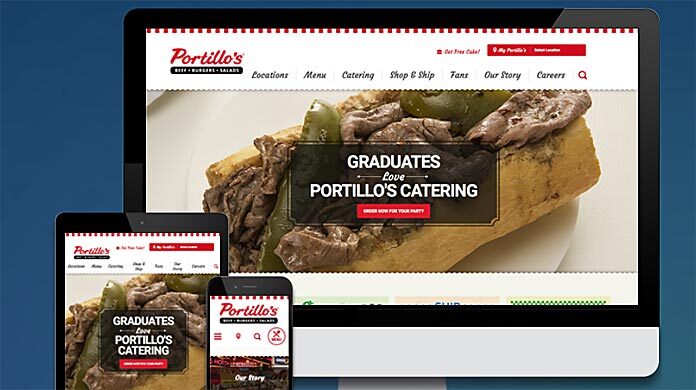
As with most businesses, restaurants need their website to reach potential customers. In talking to many of our restaurant operator readers, the challenge of not only creating a website but then keeping it relevant has become daunting. Trying to balance in-store dining against the growth of take-out and delivery has complicated the landscape.
Total Food Service reached out to one of the nation’s leading experts in the field, Americaneagle.com, to discuss how to develop an aesthetically pleasing and user-friendly website. The goal was to garner insight from the Chicago, Il based company on how an owner-operator should approach the build of a restaurant website.
How has the role of a website evolved in the restaurant industry?
The restaurant industry has evolved in the same way that all retail and customer-focused industries have. Just as a consumer will thoroughly research a product and a company online before making a purchase, so too are diners coming into restaurants having already pored over the website. Many diners walk in the door knowing the menu fully, having an idea of what they’ll order, and expecting a particular experience based on both the website and social media. The job of the website then becomes to produce an expression of the experience diners will have on-site, maintaining a consistent customer experience across all interactions.
The first generation of websites were very marketing and brochure oriented. Second generation became transactional and operational and managing your website. How do you ensure you’re still meeting the ADA standards for accessibility while still trying to keep the marketing, transaction, and operational components a great user experience as well?
Focusing on accessibility doesn’t mean that the design, interactions, or components look and feel worse than they do. It’s actually quite the opposite. When focusing on accessibility you often enhance and improve the UX of the site as well as SEO and can potentially increase in your user base. In the physical realm, it’s good to ask yourself if you have used and benefited from having a ramp into a building. The same thing can be said about keyboard functionality or simple easy to use interfaces. Focusing on many users with a concept of “universal design” you account for and benefit all users rather than making it good for one.
All we seem to hear about is the importance of Instagram as customer shoot and post photos of menu items. So why not focus marketing dollars on Instagram and Facebook rather than a website?
The reality is that these are all vital pieces of the total brand of a restaurant. Social media is a great opportunity to enable your customers to become evangelists for your restaurant, and to entice people to want to become customers. The research that your customers do isn’t exclusive to the website alone. People will visit your website, check you out on social media, and look up your reviews online. Marketing dollars need to be spent ensuring consistency across all these channels, not just the exclusive targeting of one.
We all hear and see ads for DIY and bargain priced web sites. What are the pros and cons of a restaurant taking that approach?
The benefits of that approach are that it’s cheap and that you can get something live without needing an expert. However, that’s about where the benefits stop. What you will end up with is a cookie-cutter website that doesn’t reflect all of the hard work and thought that goes into creating the right atmosphere and environment inside your restaurant, so that a web browser can’t tell you apart from the other restaurants in your space using the same web site templates. You’re typically unable to change the look and feel of the site, or expand it in any way. Once the site is live, updating it becomes a chore and sometimes a challenge, as newer updates can break older functionality and prevent people from accessing menus from their phones or navigating to certain pages, for example. A lot of the customers Americaneagle.com work with take this approach just to get something up on the web, but end up reaching out to us after the first six months when they’ve already outgrown those solutions and need something more flexible and scalable.
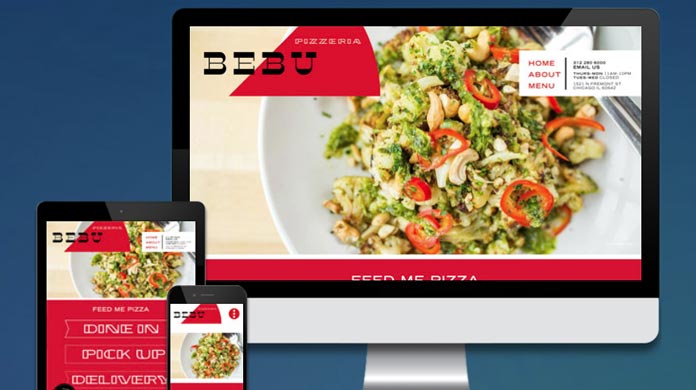 With the importance of a website, has come the need to protect your investment in that site. Let’s talk about what that conversation needs to focus on with your accountant (integration with POS)?
With the importance of a website, has come the need to protect your investment in that site. Let’s talk about what that conversation needs to focus on with your accountant (integration with POS)?
What you need to think about is not only the initial investment, but ongoing maintenance and hosting. There are an abundance of great plugins and third-party applications that can extend the functionality of your site without costly integrations work, but they typically require ongoing monthly licensing. It’s definitely a best practice to maintain a monthly block of support hours for things like updates or new development, or to simply bank up hours month-after-month to save up for a redesign, marketing campaign, or other initiatives.
Now let’s move on to what that conversation should look like with your attorney. We’ve heard this year about the emergence of ADA-American Disability Act oriented lawsuits.
The web developer and client need to work with the clients attorney carefully in order to protect the rights of their privacy policy, accessibility terms and other common website best practices.
Can you walk our readers through what that looks like? Does it mean font size or color?
The Americans with Disabilities Act (ADA) is a fairly complex piece of legislation. Americaneagle.com always recommends that our customers speak to their attorneys about how that law applies in their specific case. Generally speaking, the ADA has now been applied to website accessibility, but without a lot of guidance from the legislature. The industry has formed its own consensus by adopting the Web Content Accessibility Guidelines, which provide standard coding guidelines for web developers. generally work with our customer’s legal and marketing teams to implement WCAG standards. When we make our recommendations, these are the guidelines that we follow for implementation.
Can’t a restaurant just call the firm that designed its web site to get a fix? (Think Boeing!)
If there are issues from the firm that implemented the setup, they may not have the knowledge base in order to actually remediate the issues. A strong knowledge of the tools, specifications such as WCAG, and end user experience is needed to help rectify and produce usable interfaces. At times, this limitation of original firms means third-party auditing, remediation work, and consulting would be a necessity. Also, maintaining accessibility is a joint effort of the restaurant and the implementation or consulting firms. Often, there are issues with the content alone and the restaurant needs to take action on adjusting their content strategies. For example, the documents such as PDFs that a restaurant provides online, need to be accessible as well. If there are videos, are transcripts, audio descriptions, and closed captions created as well for those?
What has the outcome and damage looked like from these suits?
The damage can be extensive if the client doesn’t take serious remedial steps immediately in order to show good faith to comply with the law. If the remediation process is going on prior to being sued, the damages are a lot less as the remediation has already been taken place prior to the lawsuit.
How can Americaneagle.com help a restaurant design a solution with an existing website? Does it require a complete rework?
It doesn’t necessarily mean a complete rework. There could be sites out there, where accessibility was not a consideration at all and approaches/designs were done that could be faster to build new than to overhaul and work within current site setups. For many sites though, the pain points are only for more complex areas. There could be a good portion of the site which has proper links, headings, etc. The layout of the site or look and feel often doesn’t need a full change as well. Sometimes, the adjustments are some subtle color contrast adjustments to the look and feel. That being said, it really depends on the site and how much best practices were used in content, code, and setup.
What’s the next step to reach out to Americaneagle.com to discuss an ADA defense for a restaurant’s website?
The key here is to update a website so that it can be accessed by community members with disabilities. Generally, Americaneagle.com recommends an initial audit as a good starting point. It is like going to a repair shop and asking to fix a car. The mechanic can’t say for certain the extent of issues until looking under the hood. Once issues have been identified, Americaneagle.com works with the restaurant to identify goals and potential updates to make the site more accessible. We also match restaurants with good partners so that the restaurant can continue to monitor and maintain its compliance.
 Will Levenson has been working in the field of online consumer, member, and student-facing technologies for over a decade. Over his 5+ years working for Americaneagle.com, he has specialized in planning and executive effective digital marketing strategies to drive best-in-class user experience that builds recruitment, engagement, and retention for the organizations and brands he serves.
Will Levenson has been working in the field of online consumer, member, and student-facing technologies for over a decade. Over his 5+ years working for Americaneagle.com, he has specialized in planning and executive effective digital marketing strategies to drive best-in-class user experience that builds recruitment, engagement, and retention for the organizations and brands he serves.
 Nick Goodrum has been pushing the front end development world forward for Americaneagle.com for 10+ years. Nick is very familiar with best practices and modern techniques, including accessibility, page load, user experience, etc. As the Director of Front End Development, he has been involved in a large number of projects, including the American Dental Association, the Chicago Auto Show, Rust-Oleum, and the American Red Cross.
Nick Goodrum has been pushing the front end development world forward for Americaneagle.com for 10+ years. Nick is very familiar with best practices and modern techniques, including accessibility, page load, user experience, etc. As the Director of Front End Development, he has been involved in a large number of projects, including the American Dental Association, the Chicago Auto Show, Rust-Oleum, and the American Red Cross.


















